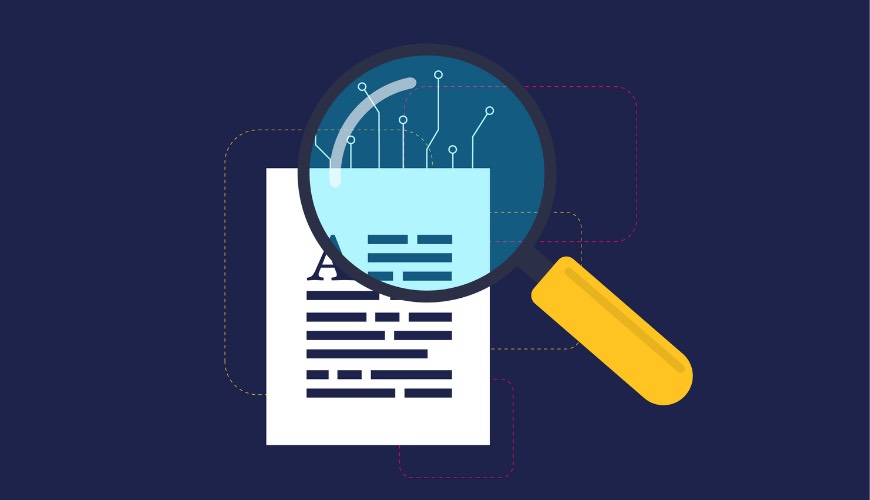Various industries have rapidly transformed with artificial intelligence, from customer service to content creation. As AI-generated content has become very common, the necessity to distinguish between machine-written and human-written text has also significantly grown important. Even though AI-detection technology is developing, there are still several obstacles and restrictions that could affect its precision and dependability.
Thus, in this blog, let’s explore the key challenges of current AI detection technology and how AI Detector overcomes these limitations with its innovative features.
The Challenges and Limitations of Current AI Detection Technology
Inconsistent Accuracy Across Languages:
Language diversity is often a challenge for AI detection techniques. When evaluating text in other languages, many detectors exhibit reduced accuracy and inconsistencies because they were trained exclusively on English-language samples. This restriction makes AI detection systems less widely applicable, especially in contexts with several languages.
Difficulty in Detecting Subtly Modified AI Content:
AI-generated content is easily modifiable to evade detection systems. Sentence restructuring, synonym substitution, and paraphrasing are a few strategies that can drastically lower the chance that content produced by AI will be reported. For detection tools, this is a major difficulty because they have to adjust to these minute changes without losing precision.
High False Positive Rates:
A significant problem with existing AI detectors is the false positive rate, which misidentifies stuff written by humans as AI-generated. This can cause undue scrutiny and damage the reputation of content producers, especially in formal and academic contexts.
Limited Contextual Understanding:
Many AI detectors don’t fully grasp the context of the content; instead, they only analyze words and syntax at the surface level. This restriction may lead to misidentification, particularly in texts that is intricate or subtle and calls for a deeper comprehension of the subject.
Scalability Issues with Large Datasets:
As the volume of content increases, many AI detectors lose accuracy and efficiency. This is particularly problematic for organizations that need to analyze large batches of text, such as publishers, academic institutions, and businesses.
How HireQuotient’s AI Detector Outperforms These Challenges?
The HireQuotient AI Detector is built to transcend the weaknesses of today’s AI detection technologies, providing one comprehensive solution that improves accuracy, scalability, and usability. Here’s how:
Multilingual Support to Global Accessibility:
Whereas most of the detectors are limited to only dealing in English, HireQuotient’s AI Detector is developed to support different languages. This feature makes it a global tool, enabling them to verify content authenticity regardless of the language.
Subtle Detection by Advanced Machine Learning Algorithms:
HireQuotient’s AI Detector uses advanced machine learning algorithms that can detect subtle patterns and inconsistencies in text, even in cases where the AI-generated content has already been modified. This tool keeps on updating its detection models so as to adapt to new tactics used in bypassing traditional detectors, ensuring a higher level of accuracy.
Reduced False Positives by Deep Contextual Analysis:
In relation to this issue of false positives, HireQuotient’s AI Detector applies a much deeper contextual analysis than mere syntax or even word patterns in the content alone. It significantly reduces the possibility that human-written content will be misidentified and upholds the integrity of real authorship.
Scalability in Large-Scale Content Analysis:
HireQuotient’s AI Detector efficiently processes huge data volumes; thus, it is the needed solution for companies that have to process extensive text data. With a character limit per analysis of up to 25,000 words, this makes it easy to check content in bulk without any loss in terms of speed or accuracy.
Detailed Reporting of Batch Analysis in Real-Time:
The tool is capable of performing real-time analysis, where immediate feedback on the authenticity of content would be given. Finally, the tool provides users with a detailed report mentioning explicitly the chance of AI-generated content and the areas most probably with problems. Therefore, it will be very useful in the domain of academic institutions, publishers of content, and corporations seeking a complete, transparent verification procedure.
Why Choose HireQuotient’s AI Detector?
HireQuotient’s AI Detector not only addresses the challenges of current AI detection technology but also offers unique advantages that set it apart from other tools on the market:
Free and Unlimited Use:
Unlike many AI detectors that offer limited free trials or require payment after a certain period, HireQuotient’s AI Detector is free forever with no hidden costs. Users can perform unlimited content checks, making it an accessible tool for all.
No Signup Required:
The tool eliminates the hassle of creating an account, allowing users to start detecting AI-generated text with just a single click.
Built-in Content Editor:
HireQuotient’s AI Detector includes an integrated content editor, enabling users to edit content directly within the tool. This feature streamlines the process of improving flagged content, ensuring it meets the highest standards of originality.
Multi-Channel Integration:
The AI Detector is designed to integrate seamlessly with popular platforms like Google Chrome and Telegram, providing robust AI detection capabilities wherever they are needed.
Conclusion
HireQuotient’s AI Detector rises above these challenges through advanced features, which can be sure to bring accuracy and efficiency to verifying the authenticity of content. Be it a content developer, an academic professional, or even a business owner, HireQuotient’s AI Detector provides the tools you need to safeguard your work against the influx of AI-generated text.






